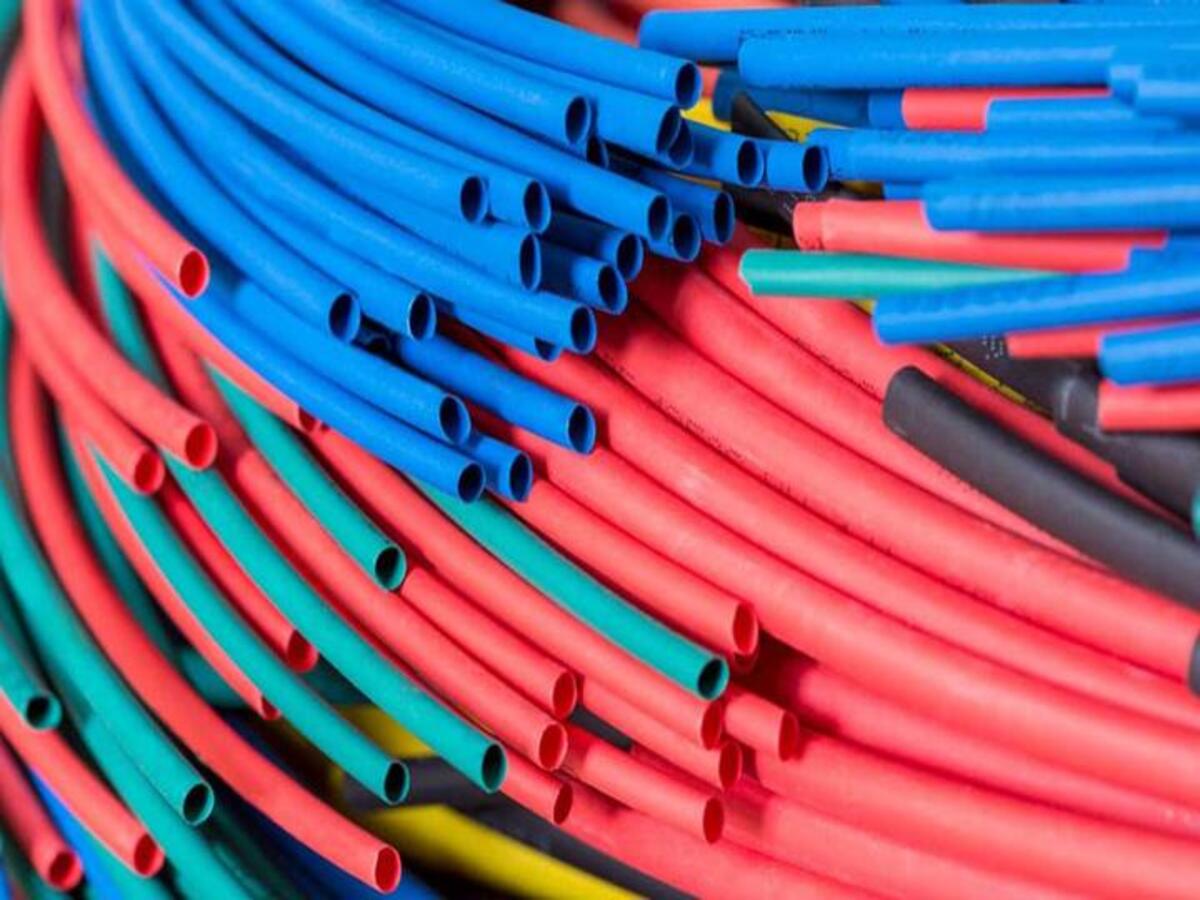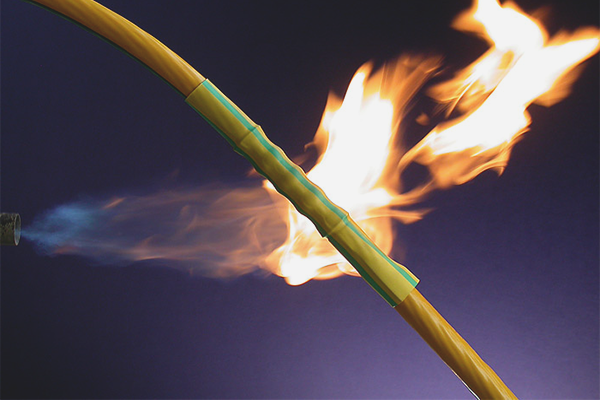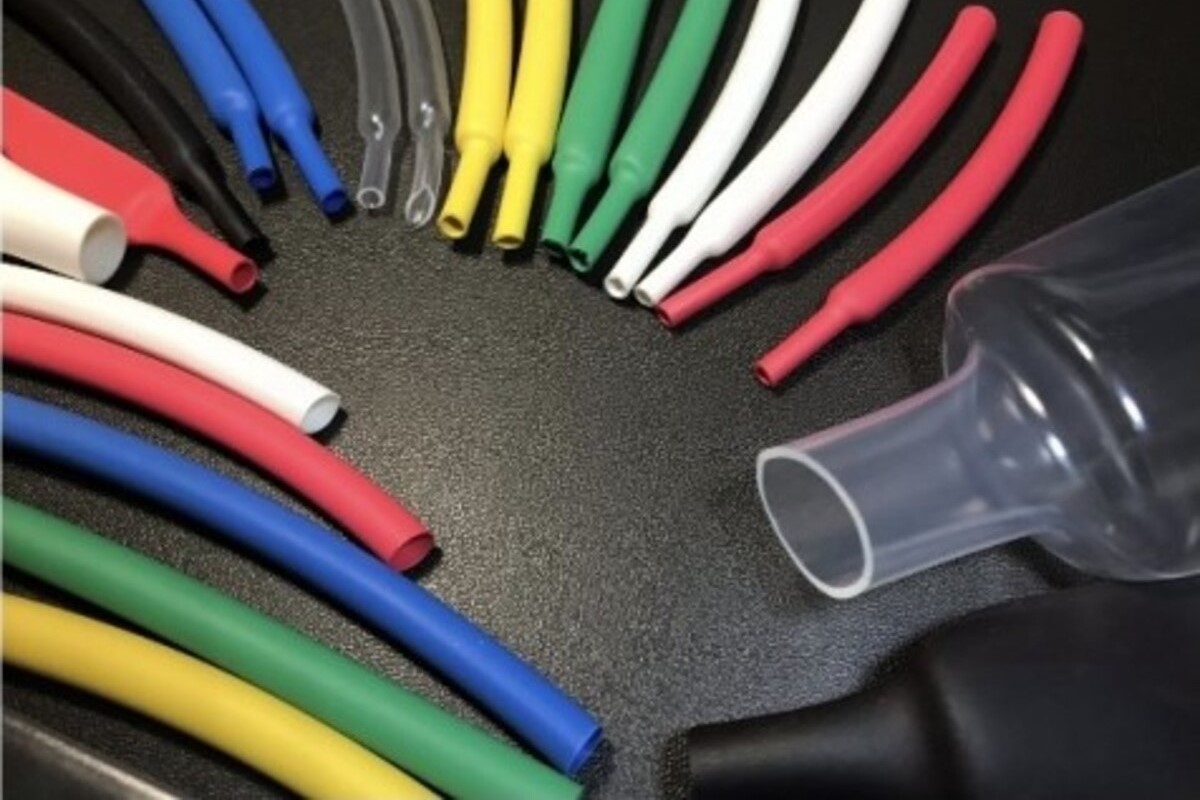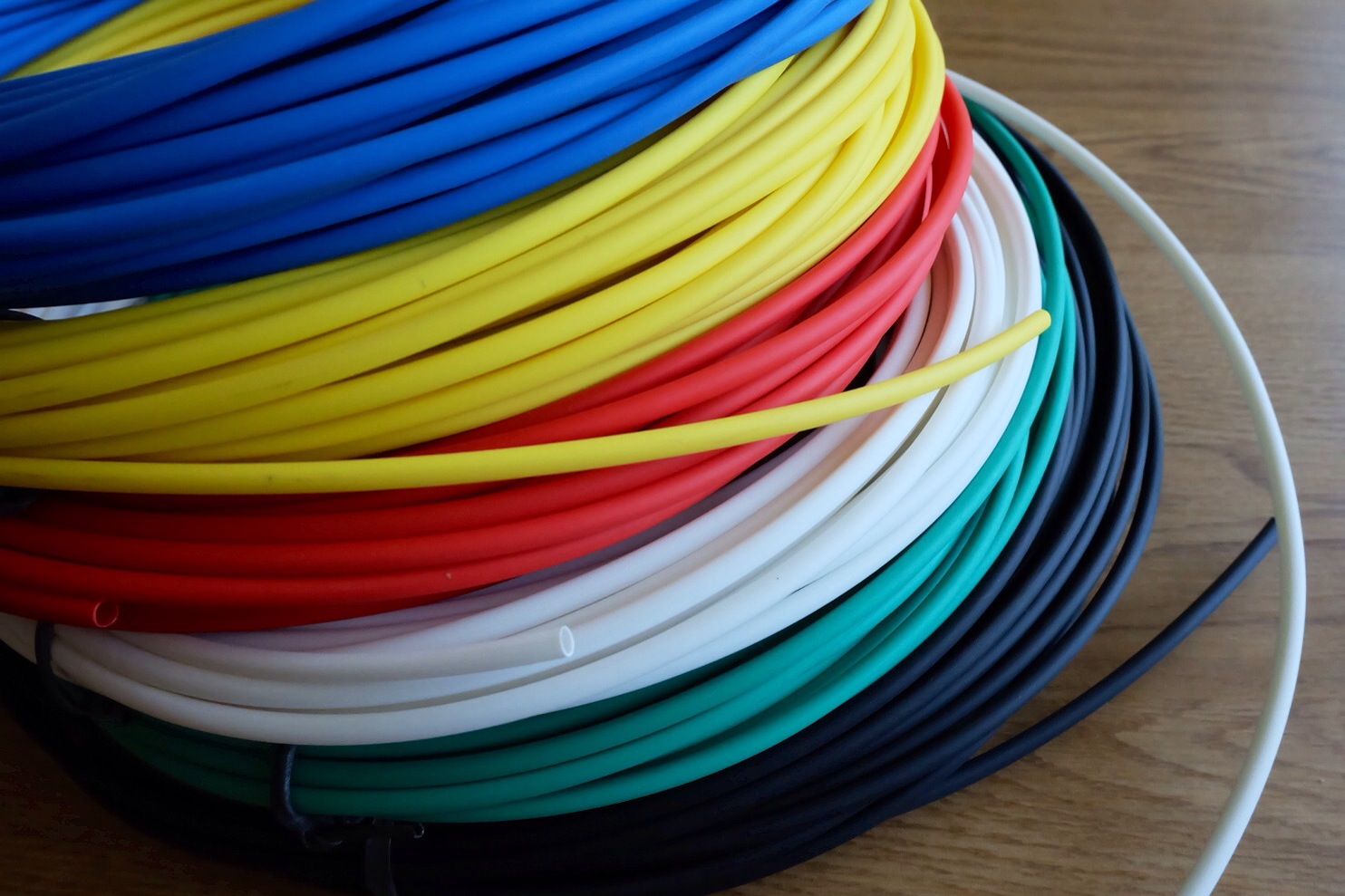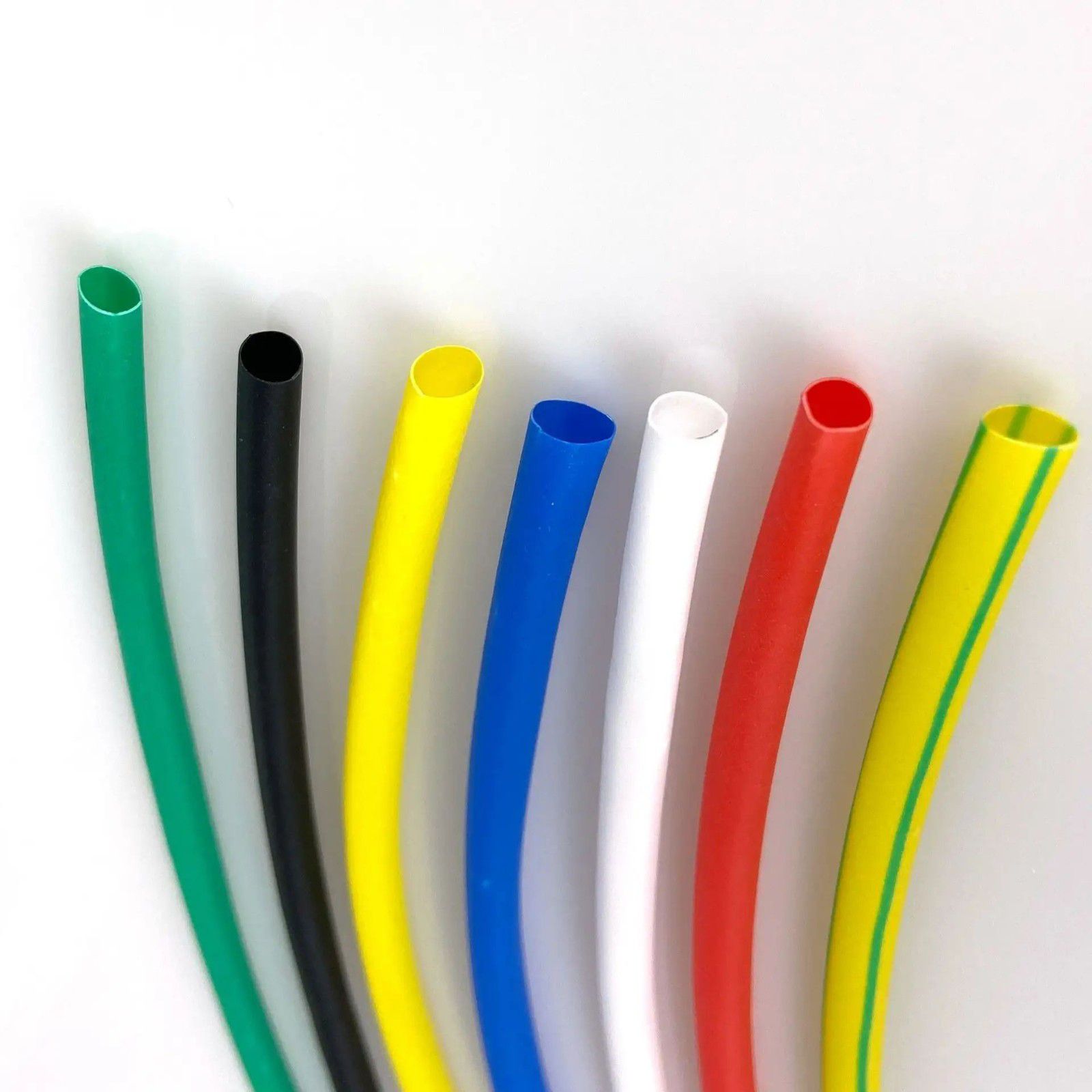
Characteristics of heat shrink tube
Details
1. Inner diameter, we know that the cross-section of the casing is cylindrical, and the inner diameter is the inner diameter of the pipe wall, that is, the distance between the inner walls. We usually use the letter Ø to express it, because Ø is used engineering. Mark the diameter, and then follow it with a number to indicate the value of the inner diameter. If the unit is not written by default, it is MM millimeters, such as Ø 6;
2.Wall thickness; the second parameter wall thickness refers to the thickness of the pipe wall and the inner diameter It reflects the size of the pipe. What does the wall thickness refer to? Intuitively speaking, it is the thickness of something. So what does thickness affect ? We know that the function of heat shrink tube is insulation protection, so thickness affects the size of insulation protection. We all know that thick clothes will prevent cold and warmth. The effect of the heat shrinkable tube is greater. The thinner the clothes, the smaller the ability to keep out the cold. Therefore, the wall thickness of the heat shrinkable tube affects its protective ability. Therefore, in general, the thicker the heat shrinkable tube, the better its mechanical protection ability;
3. Shrinkage rate; Heating will shrink, and only things that shrink will have this parameter. The shrinkage rate is sometimes called heat shrinkage rate, heat shrinkage ratio, etc. It refers to the diameter of the heat shrinkable tube at room temperature, such as Ø6. When heated The diameter after shrinkage is, for example, Ø3. Then the shrinkage rate we call is the ratio of the inner diameter of the heat shrinkable tube before shrinkage to the inner diameter after shrinkage. That is to say, 6/3=2/1. This 2:1 is the casing. The shrinkage rate reflects the shrinkage ability of the heat shrinkable sleeve. The highe, the shrinkage rate, the thinner the heat shrinkable sleeve will be after it is completely shrunk. If the heat shrinkable tube is Ø6 before shrinking and Ø2 after shrinking, and is only two millimeters in size, then its shrinkage ratio is 6:2, which is 3:1. If it is 1.5mm after shrinkage, then the shrinkage ratio is 4:1, the common shrinkage ratios of heat shrinkable tubes 2:1, 3:1, and 4:1; when talking about shrinkage ratio, we will continue to talk about wall thickness, just like a cowhide band, stretch it The wall thickness will be thinner, and the wall thicknes will be thicker after retraction. After the same heat shrinkable tube shrinks, the wall thickness will also increase. For heat shrinkable tubes, the more important wall thickness refers to the wall thickness after shrinkage of the heat shrinkable tube. Thick, because after shrinking, our heat shrinkable tube is in a protective state under heavy working conditions. The shrinkage rate of heat shrinkable tubes we refer to refers to the radial shrinkage rate, because in principle, for heat shrinkable tubes, longitudinal changes are not allowed in theory;
4. Shrinkage temperature; superficially speaking, it is heat shrinkage. The temperature at which the tube begins to shrink. We take the heat shrink tube and start heating it until it reaches the temperature at which the shrinkage reaction begins when a certain reaction begins. Our general PE heat shrink tube has a shrinkage temperature of 84°C and the shrinkage reaction begins;
5. Final Shrinkage temperature; refers to the temperature at which the shrinkage is completed, which can make the heat shrinkable tube reach the temperature of complete shrinkage. For example, our heat shrinkable tube is heated to 84°C. It is not like a cowhide band. I only need to stretch it as high as possible. When you let go, the rubber band will immediately spring back completely and return to its original shape. However, our heat shrink sleeve is not like this. When it is heated to 84°C will not immediately return to its original shape like the cowhide band. Our heat shrink sleeve Tube shrinkage is a gradual process. When we heat the heat shrink tube to 84°C, it only has a shrinkage reaction and cannot completely shrink the heat shrink tube. We must continue to heat it to the final shrinkage temperature. , if it is 120°C , then it can be completely shrunk;
6. Working temperature; this temperature is an important parameter throughout. The working temperature sometimes also refers to the rated temperature, which refers to the temperature at which the casing can work normally and continuously. The previous The two temperatures refer to the temperature at which the heat shrinkable tube can shrink when processed. Let's take the Ø6 heat shrinkable tube as an example. Slowly heat the heat shrinkable tube with a hot air gun. When the temperature begins to reach 84°C, the heat shrinkable tube begins to shrink. Then slowly shrink to Ø5 and Ø4. When the temperature reaches the final shrinkage temperature of 120°C, the heat shrinkable tube completely shrinks to Ø3 and shrinks tightly on the object. Then the process of processing and heating is over, and then the heat shrinkable tube is put on. This component is installed on an air conditioner, etc., and performs normal work. Its normal working environment, for example, the normal working temperature of our casing is -55°C to 125°C, because we know that many times, the product will be sold to various places. Go, the environment in some places is relatively cold, and some places are relatively hot, then it has a certain scope of application. The nominal temperature of our product indicates that it can be used normally at this temperature. Once it exceeds the normal use temperature . it may not be able to guarantee the lifespan or work normally. The normal temperature we are talking about here is that the heat shrinkable tube can provide insulation protection. If it exceeds this temperature. it may not be able to play the role;
7.Color; the color of the heat shrinkable tube Needless to say, there are conventional ones to choose from. If we understand the above parameters of heat shrink tubes , we can know the characteristics of heat shrink tubes: specifications, sizes, colors, etc., and then we can choose the type.
Powered by Froala Editor
Powered by Froala Editor
Powered by Froala Editor
